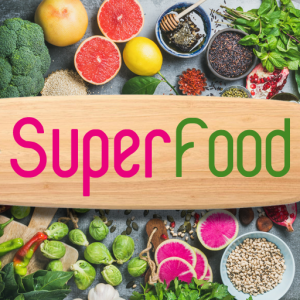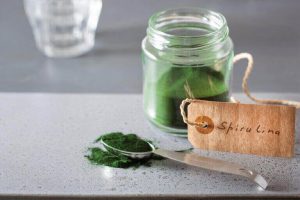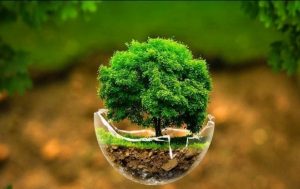Phycocyanin dye or edible protein
Color is one of the main characteristics of foods. The color and taste of a food are two parameters that determine the quality of food. And in many cases, changes in color and taste are related to each other. From the point of view of the food industry, it is necessary to use colors to create new products or to improve the product. And for this reason, the use of color in the food industry is increasing day by day.
Food coloring refers to substances that add color to food or drink. These substances exist in different types of powder, liquid, gel and paste. Additives are added to foods with special purposes such as flavoring, sweetening, shaping and coloring. Colors have a special place among food additives. Along with taste, color is one of the most basic sensory properties of food. But they may also have side effects. Therefore, natural colors, especially colors that are obtained naturally from algae, not only do not have any side effects, but they can also have effective therapeutic properties. Phycocyanin dye, which is a derivative of spirulina algae, is one of the best and most useful edible dyes, which are used in many non-edible uses such as pharmaceuticals, cosmetics, medical equipment, etc. With this explanation, we intend to discuss the purity and usefulness of phycocyanin color in this short article and introduce you to its various uses.
Nowadays, the use of natural colors in food and medicine is very important. Phycocyanin is a blue protein pigment complex found in cyanobacteria and microalgae. This water-soluble natural pigment has great potential in the food, pharmaceutical, cosmetic and biotechnology industries due to its unique properties such as immune system stimulation, antioxidant, anti-cancer, anti-inflammatory, antiviral, cholesterol reduction and fluorescent marker activities. It is mentioned as a combination of food and medicine, especially in health foods. In addition to its valuable biological properties, this natural color is completely safe compared to chemical and synthetic colors and can be used in many food products such as ice cream, dairy products, chewing gum, clear drinks and jellies. The commercial source of its production is Spirulina platensis (Arthrospira platensis), which has disadvantages such as instability at high temperature and low pH, low purity and need for light, so it is important to find new sources with the aim of increasing stability. The production and successful applications of phycocyanin depend on pigment production with the help of recombinant DNA technology and its nutritional, rheological and medicinal value has been increased by protein engineering.
Uses of phycocyanin solution
Phycocyanin solution can be used as protein supplements and detoxifiers. Drinking the permitted amount of phycocyanin solution during the day repels and neutralizes possible toxins in the body and improves energy in people. It also increases energy for people who do heavy sports and hard activities. Its use in ice cream and cold drinks is also significant. Phycocyanin solution can be used in ice cream and cold concoctions due to its temperature tolerance to low and sub-zero degrees. The mixture of virtual amount of phycocyanin with water or smoothie and juice can be different and rich in terms of visual and natural properties for humans. Also, by combining the beneficial product of phycocyanin in salad dressing or cold desserts, it increases and improves the health of people in the food they receive.
Here, we intend to provide you with a practical and practical example of phycocyanin dye and its nanoparticles in the formulation of ice cream in order to get to know more.
As mentioned earlier, the color factor is of particular importance in some food items such as drinks, ice creams, jellies, chocolates and dairy products. Colors derived from mineral sources such as lead chromate and copper sulfate cause problems. They are serious about people’s health. The use of artificial colors in terms of their residual presence in food, environmental pollution, low stability, sensitivity to environmental factors and also the use of not very useful materials in their formulation is decreasing day by day and food producers are using artificial colors. Naturally, they show more desire. Natural colors have the potential to replace synthetic colors in terms of positive effects on people’s health, nutritional and medicinal effects, lack of environmental problems and suitable market. Statistics show that the trade of natural colors and flavorings by the European Union in 2008 was 475 thousand tons equal to 2055 million euros. The most important natural colors are carotenoids, beta-carotene, lycopene, xanthophyll, lutein, phycobiliproteins, annatto, flavonoids, anthocyanin and chlorophyll.
Phycocyanin, which is one of the natural pigments with a blue color and is extracted from the spirulina platensis algae, can be used as a natural pigment in various food products such as gum, jelly, ice cream, chocolate, drinks, etc. In addition to the positive effects of this property, phycocyanin has healing, antioxidant and antibacterial properties, and it is possible to enrich different foods with this pigment.
Use of phycocyanin in ice cream formulation

Roya Algae Pars Company has been studying and investigating various properties of spirulina algae and one of its most effective derivatives, phycocyanin color, for many years. Among the studies carried out by Pars Algae Dream is related to the evaluation of the effect of phycocyanin on the quality properties of ice cream. According to the conducted studies, the amount of 100 μg/ml for the pure form and 500 μg/ml for the nano-coated form was added to the mixture before freezing. Of course, it should be noted that the selection of this concentration was based on the ice cream that had been pre-tested and the study of other researches regarding the use of algal pigments in food.
Making ice cream
The ingredients used included 28% cream, 16% sugar, 5.5% non-fat dry milk, 0.4% stabilizer, 0.1% vanilla, and 50% fresh milk (1.5 fat). After weighing the raw materials, first the milk was heated to a temperature of 40-45 degrees Celsius. Then, milk and cream were evenly mixed using a hand mixer for 1 minute, and after that, other components (sugar, powdered milk and milk powder) were added to the mixture and mixed with a mechanical mixer for 5 minutes. The resulting mixture was pasteurized at 70°C for 30 minutes and finally cooled to 5°C with the help of cryogen (ice and salt water). Then, the curing step was done at 4-6°C for 24 hours. Phycocyanin color (free form and nano microcoated) and other flavoring materials such as vanilla were also added to the mixture. The mixture was frozen in a non-continuous ice cream maker (Gel-Matic, Italy) for 30 minutes at -4°C, and finally the ice cream was packed in polyethylene plastic containers with lids. The produced product was placed at -18°C for 24 hours to complete the hardening stage.
Evaluation of quality characteristics of produced ice cream
In terms of PH:
A digital pH meter was used to measure the pH in the mixture at a temperature of 25°C.
In terms of viscosity:
The viscosity of the mixture was measured using a Brookfield rotary viscometer model DV-+Pro at a temperature of 5°C, which was kept constant with the help of a mixture of water and ice for 60 seconds on an ice cream mixture with a volume of 600 mg with an L4 spindle and a speed of 50 revolutions. Done in minutes.
In terms of volume increase factor:
The increase in volume was calculated by weight method by comparing a specific volume of ice cream mixture before and after freezing and calculating their percentage difference.
In terms of tissue stiffness:
To determine the hardness of samples with a diameter of 50 mm after the hardening stage, a tissue analysis machine with a cylindrical probe of 5 mm, penetration speed of 1 mm/s and penetration value of 10 mm was used.
In terms of melting amount:
A 30 gram sample of ice cream was placed on a mesh metal plate at the opening of Erlenmeyer inside the incubator at a temperature of 25 degrees Celsius, and the weight of the melted ice cream was 41.73% in terms of the efficiency of the nano microcapsulation of phycocyanin, which shows the high efficiency of this method. It has phycocyanin in the microcapsule.
experiment results
In order to evaluate the effect of phycocyanin on the quality parameters and sensory indicators of ice cream, from the control treatments (without pigment) and the pure and nano microcoated forms, pigment was added in the amount of 100 and 500 micrograms per milliliter of mixture (before freezing) and the product was prepared according to the standard was evaluated. The desired concentration was determined based on the pre-tests and observation of the created color, as well as other studies conducted by the Pars Algae Dream team regarding the use of different pigments in food. The results of the physical and sensory parameters of mixed ice cream containing pure phycocyanin were estimated, indicating that the phycocyanin color in the ice cream formulation improved the qualitative and sensory properties of the product and it can be used in the production of drinks, jelly and Ice cream used as texture improver and biological colorant.
At the end of Pars Algae Dream, it invites all those interested in the production, cultivation and processing of spirulina algae and its derivatives and is ready to provide advice in this field.
Contact us for more information and advice.










